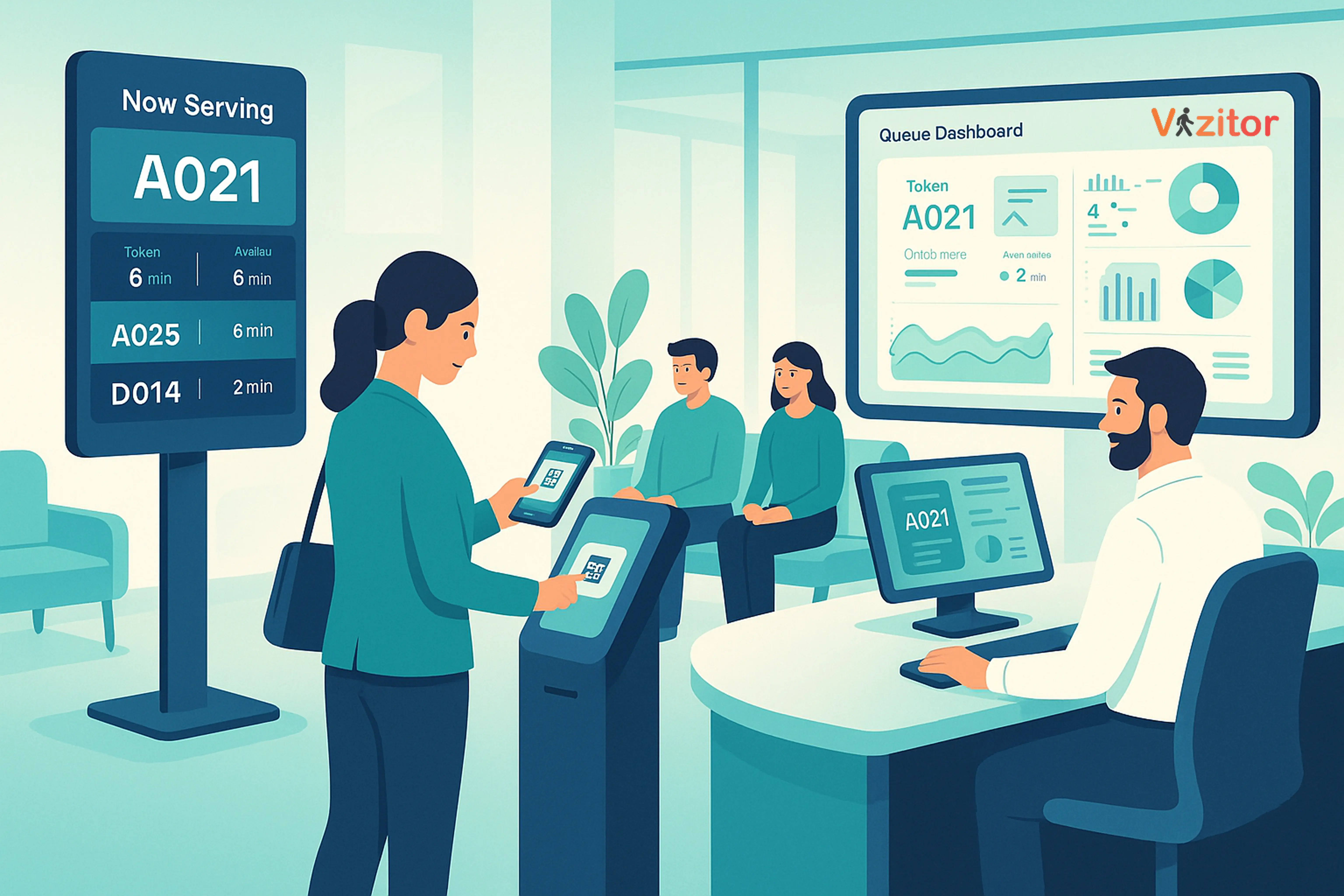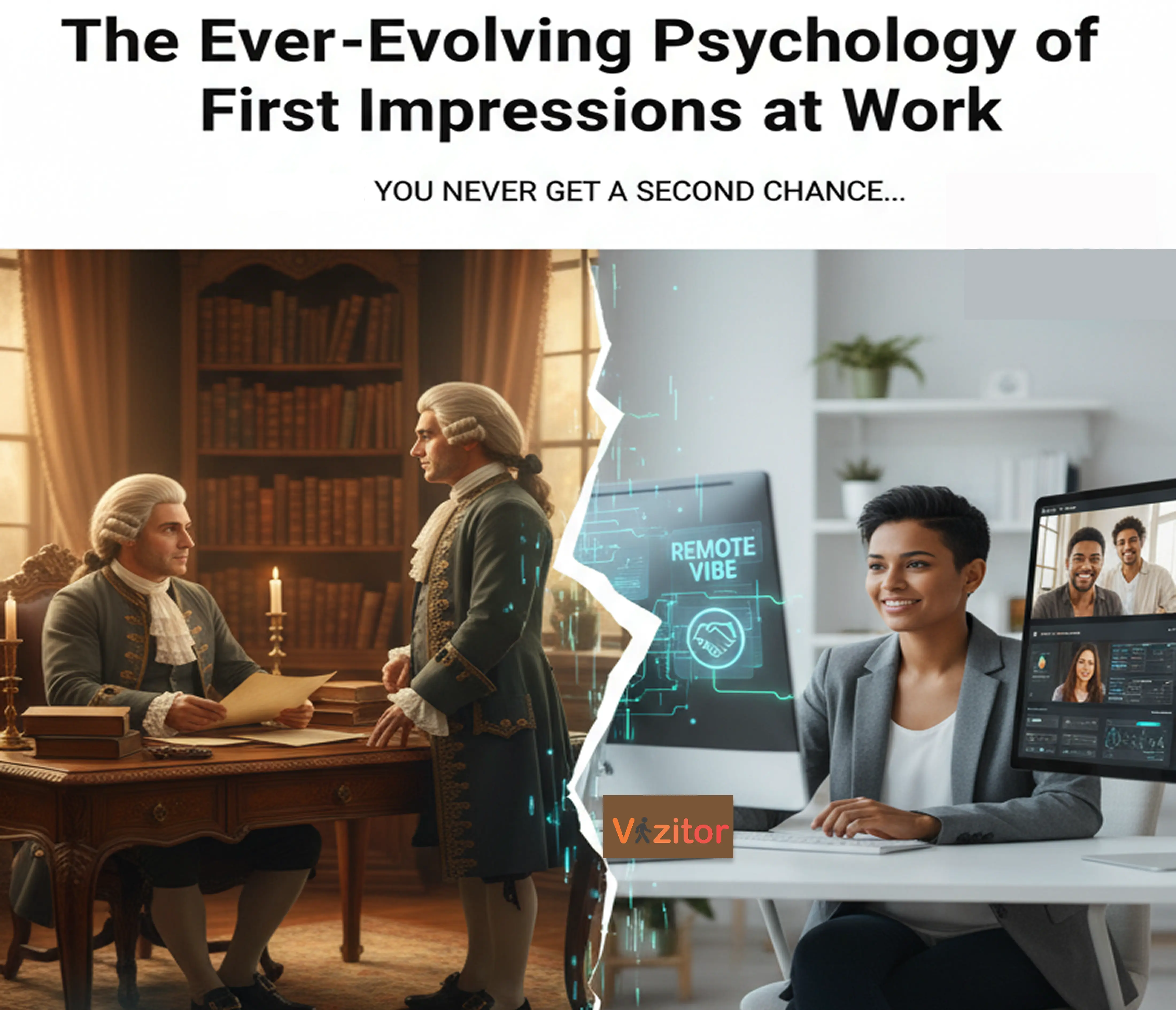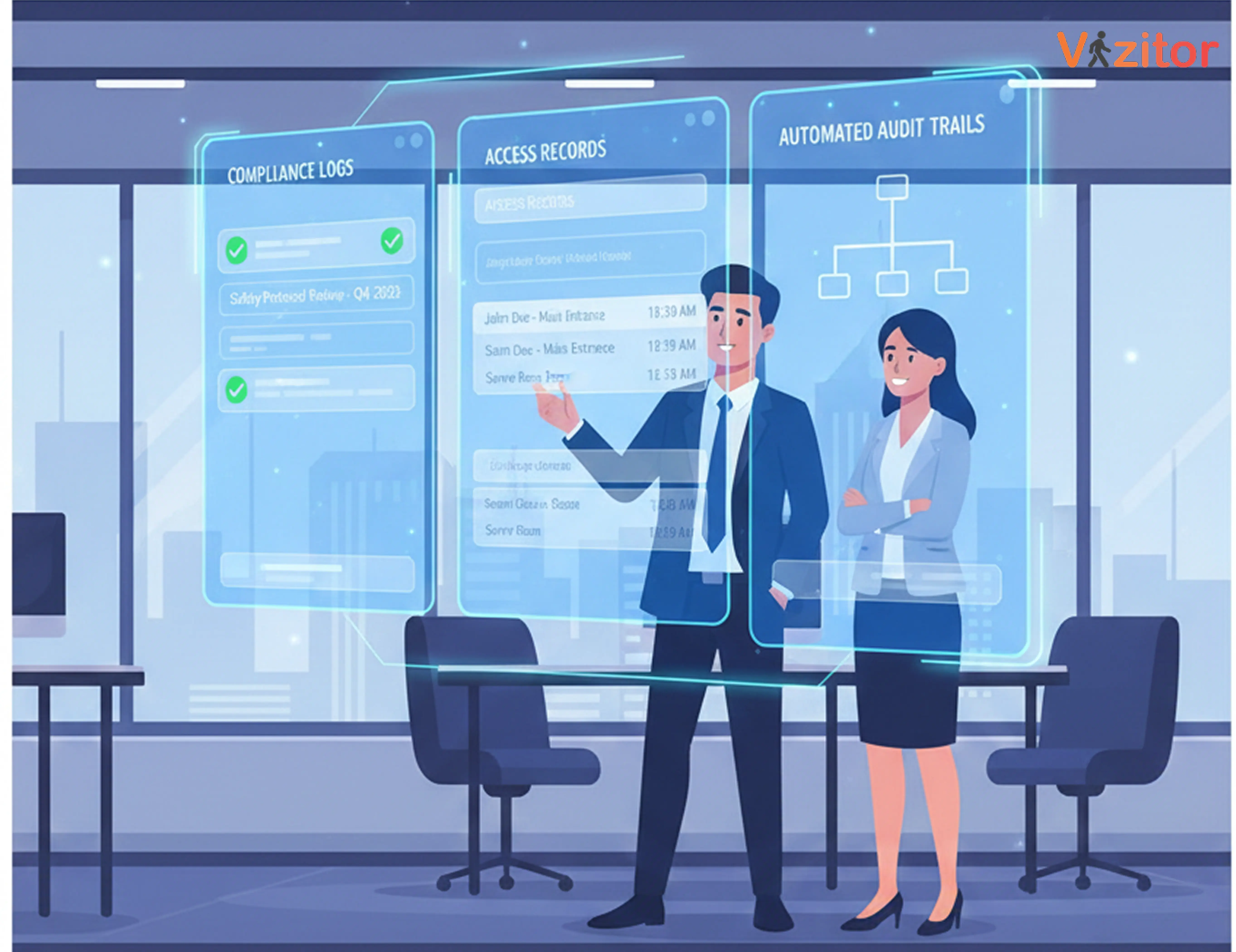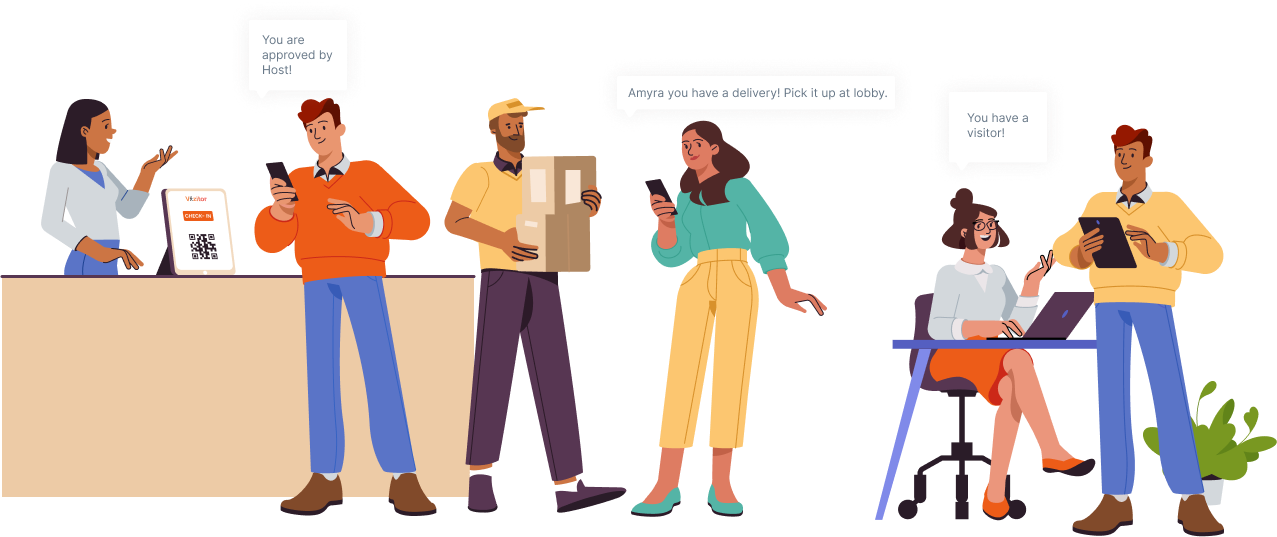How to Prepare Your Office for a Visitor Management System
Preparing your office for a digital visitor management system ensures efficient check-ins, enhanced security, and a professional visitor experience. This blog guides organizations through assessing current processes, defining visitor policies, preparing reception areas, integrating with existing systems, training staff, and educating visitors. Platforms like Vizitor enable features such as QR code check-ins, smart badges, automated notifications, and real-time analytics, helping offices streamline visitor workflows, improve compliance, and create a seamless, modern visitor experience.
Table of Content
Try Vizitor for Free!
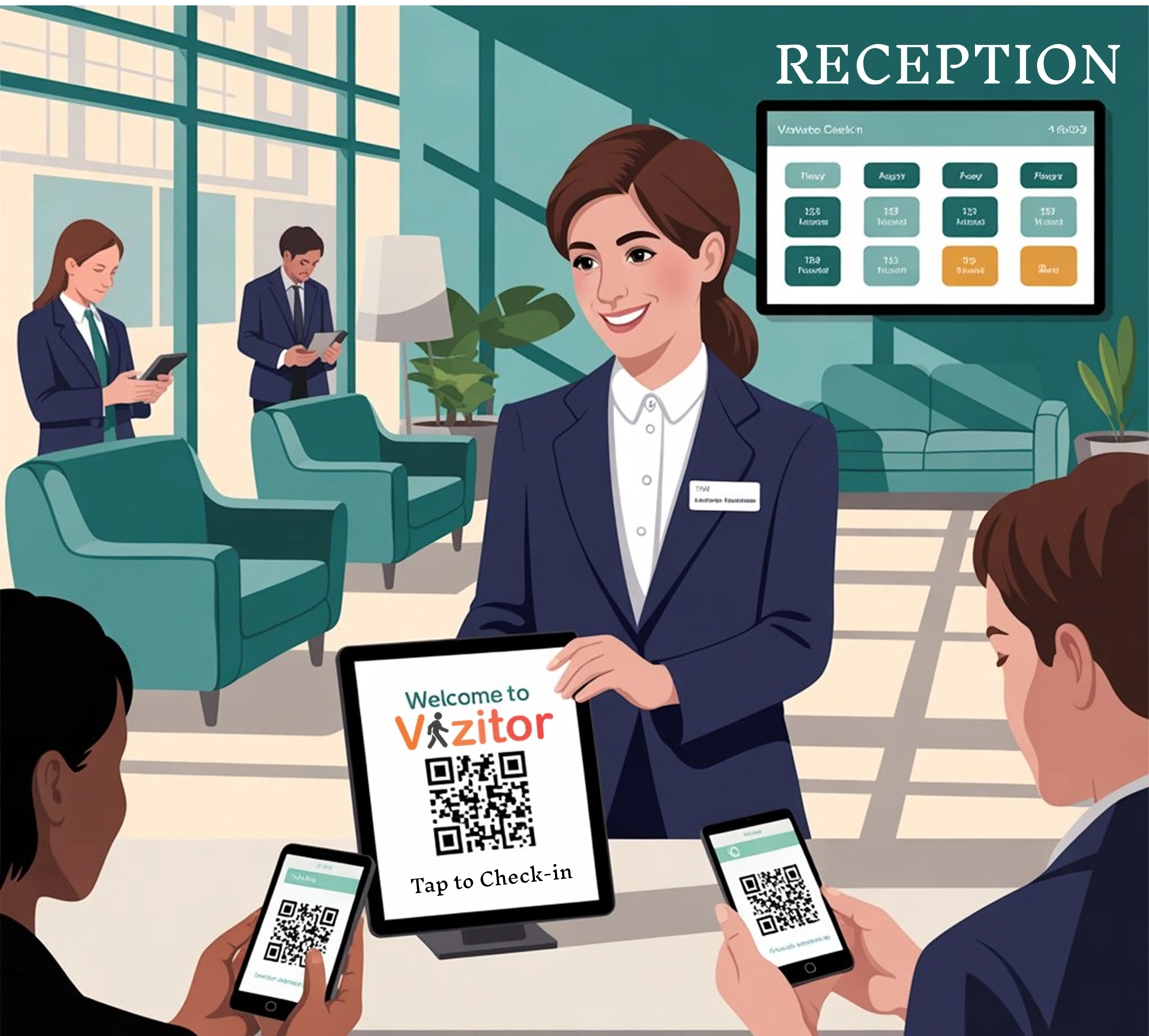
Published on: Fri, Oct 10, 2025
Read in 5 minutes
Introduction
Your office lobby or reception is often one of the most overlooked and inefficient areas in your workplace. Long queues, busy receptionists, and manual logbooks can frustrate both visitors and staff, slowing down operations.
A visitor management system (VMS) like Vizitor can transform this process, offering digital check-ins, real-time notifications, and secure visitor tracking. But before implementation, it’s crucial to prepare your office to ensure a smooth transition and maximum benefit.
This guide will walk you through the steps to get your office ready for a modern visitor management system.
1. Assess Your Current Visitor Process
Why It Matters
Understanding your existing workflow highlights pain points and clarifies what you need from a VMS.
Consider:
-
How visitors currently check in (manual logs, spreadsheets, badges).
-
Common issues like:
- Reception desk left unattended
- Visitors unsure where to go
- Bottlenecks due to complex sign-in procedures
- Difficulty tracking visitors for security or compliance
Outcome:
A clear audit of your current process helps identify which features your VMS must provide, such as digital check-ins, visitor badges, or automated host notifications.
2. Define Your Visitor Management Goals
Why It Matters
Every office has unique challenges and objectives. Define what you want your system to achieve:
- Efficiency: Reduce check-in time and queues.
- Security: Control who accesses your office and sensitive areas.
- Compliance: Maintain accurate visitor logs for audits.
- Professionalism: Improve first impressions with a smooth visitor experience.
Vizitor Feature Highlight: Configure your system to automate notifications, issue badges, and monitor visitor movement based on these goals.
3. Identify Key Stakeholders
Who Should Be Involved
- COO / Operations Head - oversees office efficiency.
- HR Director - manages employee and guest policies.
- IT Manager - handles system integration and setup.
Tips:
- Limit stakeholders to the essential decision-makers to prevent bottlenecks.
- Identify which department will cover costs and interact daily with the VMS.
Outcome: Streamlined decision-making and clear ownership.
4. Research Your Options
Where to Start
- Use Google, Bing, or AI tools like ChatGPT to explore solutions.
- Check review platforms like G2 or Capterra for user insights.
Things to Compare:
- Features: digital check-in, QR codes, badges, notifications
- Pricing: subscription vs add-ons
- Integration: compatibility with calendars, access control, and meeting rooms
Tip: Partnering with a dedicated VMS provider like Vizitor ensures a system designed for visitor management, not bundled software that only partially meets your needs.
5. Narrow Down Your Choices
Key Considerations
- Solves your main challenges (queues, security, logs).
- Easy for staff to learn and use.
- Fits within your budget.
- Simple implementation and minimal IT burden.
Vizitor Advantage:
Provides user-friendly setup, intuitive dashboards, and scalable features suitable for offices of all sizes.
6. Prepare Your Reception Area
- Set up tablets or kiosks for digital check-ins.
- Ensure signage is clear for first-time visitors.
- Provide seating and guidance for waiting areas.
- Configure badges, notifications, and visitor flows in the system before launch.
Outcome: A welcoming, professional, and efficient reception.
7. Train Your Staff
- Train receptionists on daily check-ins and troubleshooting.
- Train security staff on monitoring dashboards and alerts.
- Train hosts on receiving notifications and approving visitor access.
Tip: Run trial check-ins with staff to simulate real scenarios.
8. Communicate With Visitors
- Send pre-registration instructions via email or SMS.
- Explain contactless check-in methods like QR codes.
- Provide directions for parking, building entry, and meeting rooms.
Vizitor Feature: Automated visitor notifications ensure guests know exactly what to do upon arrival.
9. Test and Launch
- Test hardware (tablets, kiosks, smart badges) for connectivity and speed.
- Simulate peak visitor scenarios to verify system capacity and reliability.
- Ensure integration with calendars, access control, and notification systems works seamlessly.
Tip: Use testing to refine workflows and prevent bottlenecks on day one.
10. Monitor, Optimize, and Expand
- Track visitor trends, peak hours, and room utilization.
- Gather feedback from staff and visitors to refine the process.
- Expand features as needed: package delivery alerts, VIP check-ins, or multi-location integration.
Outcome: Continuous improvement ensures long-term efficiency and visitor satisfaction.
Case Study Example: Corporate Office
Background:
A corporate office with frequent client visits faced long reception queues and poor visitor tracking.
Solution:
- Implemented Vizitor for digital visitor check-ins and smart badges.
- Integrated with meeting room scheduling and host notifications.
- Enabled pre-registration and QR code check-ins.
Results:
- Reduced check-in times by 50%.
- Improved security and compliance.
- Delivered a professional, seamless visitor experience.
Frequently Asked Questions (FAQs)
What is a visitor management system (VMS)?
A VMS is a digital solution that automates visitor check-ins, tracks guests in real-time, issues badges, and improves security and efficiency in the workplace.
How long does it take to implement a VMS?
Implementation is typically quick. With Vizitor, offices can set up tablets, configure workflows, and begin welcoming visitors the same day, though full training may take a few days.
Does a VMS help with security and compliance?
Absolutely, A VMS provides digital logs, access tracking, and automated reports, helping offices maintain compliance with regulations like GDPR and ensuring secure visitor management.
Can a VMS handle different types of visitors?
Yes, Vizitor supports clients, contractors, delivery personnel, employees, and VIP guests, with configurable access permissions for each type.
How do I get started with Vizitor?
You can book a demo and start a free trial to explore features like digital check-ins, visitor badges, real-time notifications, and meeting room integration.
Conclusion
Preparing your office for a VMS requires planning, training, and workflow adjustments. By following these steps, you ensure a smooth implementation, enhanced security, and improved visitor experience.
Vizitor provides a scalable, intuitive, and feature-rich system to help offices of any size transition to digital visitor management effortlessly.
Ready to modernize your visitor management?
Book a demo with Vizitor today and start your free trial to streamline check-ins, improve security, and elevate your office’s visitor experience.





